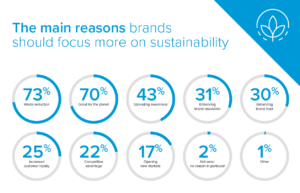By Alexander Berrai, Deputy CEO at emerchantpay
Last month, Open Banking usage in the UK exceeded 10 million users. While this is a significant achievement, the overall adoption of Open Banking as a payment solution has been relatively slow. Both retailers and their customers stand to benefit greatly from its use, but the lack of consumer trust, understanding and awareness has delayed widespread adoption.
Open Banking allows consumers to securely share their financial data – with their explicit consent – with trusted third-party providers. This technology is emerging as a game-changer for the ecommerce industry, enhancing the payment experience for consumers while offering the potential to drive improved business results for ecommerce companies.
To fully capitalise on the advantages of Open Banking and stay competitive in today’s market, greater collaboration between retailers and their payment providers is essential. This will help educate consumers about the benefits of Open Banking and encourage broader adoption.
Enhancing payments in ecommerce through Open Banking
Open Banking offers a revolutionary, efficient and user-friendly way to handle payments. For merchants, it provides a direct connection to bank accounts, resulting in quicker transactions and minimising the risk of fraud with bank-level security – an essential factor in the eCommerce space. Furthermore, Open Banking eliminates the risk of chargebacks and supports near real-time payments.
For ecommerce businesses, adopting Open Banking as a payment method creates a more seamless checkout experience. Consumers no longer need to repeatedly enter card details, allowing them to make purchases with just a few clicks, paying directly from their bank accounts. This simplicity not only improves the user experience but also has the potential to reduce cart abandonment rates, a persistent issue for online retailers.
Moreover, Open Banking offers better financial management for consumers by providing real-time insights into their spending. With up-to-date account balance information, customers can gain a clearer understanding of their finances, enabling more informed personal financial management.
Shifting consumer attitudes towards alternative payment methods
As digital payment options evolve, so do consumer preferences. Research indicates a growing interest in Open Banking, particularly among younger generations. In fact Open Banking usage among 25-34 year olds is anticipated to surge by 32% over the next five years. This shift reflects a broader trend of consumers seeking more control over their finances, favouring payment methods that offer transparency and security.
While Open Banking may not immediately disrupt other payment methods, it has the potential to become more popular in the future. For instance, 14% of consumers plan to increase their use of Buy Now, Pay Later in the next five years, compared to 19% who expect to increase their use of Open Banking within the same timeframe.
The role of retailers in driving consumer awareness and adoption
While the benefits of Open Banking are clear, its widespread adoption depends heavily on consumer awareness. Recent research reveals that 51% of consumers are unfamiliar with the term “Open Banking”, yet half of them are already using it without realising. Once informed, the number of people who recognise they are using the technology increased to 58%, and 37% expressed a likelihood of making online payments using the solution.
This highlights the need for retailers to better educate customers about Open Banking, its usage and how it can enhance their online shopping experience. Transparent communication is key, emphasising the security and convenience Open Banking provides. To make Open Banking more accessible, merchants should use clear, familiar terms like “bank transfer”, instead of “Open Banking”, during the checkout process, to make the option more relatable.
Encouraging adoption through improved interfaces and real-world examples
Using clear labels and descriptions during the checkout process along with intuitive interfaces, can reduce consumer hesitation and encourage more frequent use of Open Banking. A recent example of a UK merchant promoting Open Banking is JD Wetherspoon. Consumers using Wetherspoon’s mobile app to purchase food, and drinks now have the option to pay via Open Banking. This move could inspire other retail and hospitality merchants to follow suit, potentially accelerating the adoption of Open Banking in everyday consumer transactions.
The Path to Widespread Adoption
The journey towards widespread Open Banking adoption is just beginning. By offering a secure, efficient and user-friendly payment experience, Open Banking has the potential to reshape the way consumers interact with online retailers. However, its success depends on the collective efforts of merchants and financial institutions to drive awareness and adoption. For ecommerce businesses, the time to act is now. By embracing Open Banking, educating consumers and engaging with this innovative payment method, merchants can unlock new opportunities for growth and innovation in the ecommerce sector.












